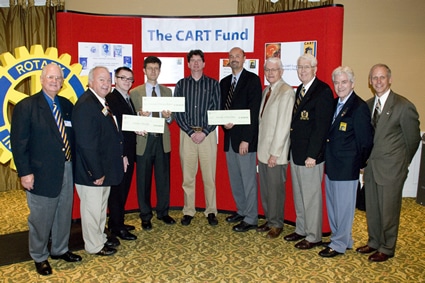Paul Murphy, University of Kentucky ($250,000 2yr. Grant)
Alzheimer’s disease is sometimes called “the diabetes” of the brain, because, like diabetes, it is common and shares some common features including accumulation of proteinaceous deposits called amyloid. Moreover, until recently, it wasn’t apparent that diabetes itself is a risk factor for AD, and insulin, a key hormone regulating the body’s ability to respond to glucose (“sugar”) levels in the blood and centrally involved in the pathogenesis of diabetes, also has important effects on brain cells and the cellular and molecular processes involved in AD. Dr. Murphy’s exciting research proposal will study the shared mechanisms involved in AD and diabetes, and another new link between them – obesity.
Luigi Puglielli, University of Wisconsin ($150,000 2 yr Grant)
Accumulation of a toxic protein fragment known as the amyloid beta peptide (Aß) in the brain is belieed to play an important role in Alzheimer’s disease., and as such, there is worldwide interest in developing new ways to reduce the build up Aß in the brain as a therapeutic strategy for prevention and treatment of AD. Dr. Puglieili’s CART research grant takes an entirely novel and promising approach to reducing amyloid production in the brain. His research will capitalize on promising preliminary finding s and discovery of new drug-like compounds that appear to change the activity of another key protein, called BACE1 (the Beta Amyloid Converting Enzyme). Further development of these and other related compounds in this research could lead to new drugs that reduce Aß production in a more safe way than other strategies under development.
Kurt Brunden, Pennsylvania State University ($50,000 year Grant)
Dr. Brunden’s proposal is close behind Puglieli’s in terms of proximity to animal model testing, after Brunden does some toxicology. Brudens proposal focuses on a family of aminothienopyridizine (ATPZs) compounds that emerged from 290,000 compound screens for drugs to block tangle formation in AD. He has identified several ATPZs that are worthy of bringing forward in animal studies.


